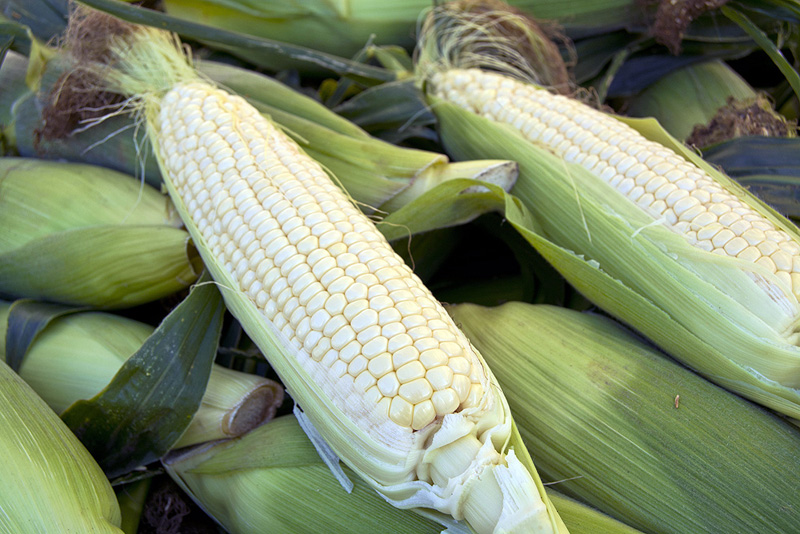Let’s ‘Ear it for Corn!

 CONTRA COSTA COUNTY, CA (August 14, 2024) — Summer wouldn’t be complete without sweet, juicy corn on the cob. Sweet yellow, white and bicolor corn varieties are the stars of summer picnics and barbecues. There’s nothing quite like sinking your teeth into a fresh cob, hot off the grill. Sweet corn is hard to top for its flavor, freshness and just plain good summer eating, especially from your local farmer.
CONTRA COSTA COUNTY, CA (August 14, 2024) — Summer wouldn’t be complete without sweet, juicy corn on the cob. Sweet yellow, white and bicolor corn varieties are the stars of summer picnics and barbecues. There’s nothing quite like sinking your teeth into a fresh cob, hot off the grill. Sweet corn is hard to top for its flavor, freshness and just plain good summer eating, especially from your local farmer.
Corn, also known as maize, isn’t a vegetable. It’s a grain domesticated from a grass called teosinte over 7,000 years ago by indigenous people in North and South America. It became a staple food for many cultures. Corn eventually spread throughout the Americas and surprised European explorers who had never seen anything like it.
In Northern California, sweet corn is primarily grown in Contra Costa and San Joaquin counties, from Brentwood to Stockton. G&S Farms and Simoni & Massoni Farm are producers, but many smaller farms also contribute. They get their sweet corn to market quickly to preserve its peak flavor. Since corn loses sweetness as soon as it’s picked, they also keep it chilled to lock in that sugary goodness. Unless you’re picking them directly off the farm, other sources of corn can’t beat the freshness and taste of those from the farmers’ market.
There are numerous varieties of corn used for feed and fuel, but the ones seen at your farmers’ market are sweet corn and sticky corn.
Sweet corn, the corn we eat, can be eaten fresh, canned or frozen. It makes up only 1% of total corn grown in the entire U.S. Sweet corn is seldom processed into feed or flour. It gets its name because it contains more sugar than other types of corn. It is available with white, yellow or bicolor kernels. Remember, it has a very short shelf life.
“Sticky” corn, also called waxy corn, is chewy and more glutinous than other corn and needs to be cooked longer. In addition, there’s a purple sticky corn (even stickier than the white sticky corn) with purple kernels. Sticky corn is usually boiled and served. You can also make some tasty corn fritters.
Our farmers appreciate your cooperation in handling their corn at the market. To keep the corn fresh for everyone, please avoid peeling back the husks to inspect it. A peek of an inch or two is plenty. Also, poking the kernels with your fingernails is unsanitary and doesn’t tell you much about freshness. Instead, strike up a conversation with the farmer. They’re passionate about their crop and love to talk about it. They’ll be happy to answer your questions and help you choose the perfect ears.
Select: Corn is best stored in a cool environment, since warm temperatures will convert the sugar in the corn to starch. Your farmers’ market producer should be displaying their corn in cold or iced containers. The husks should be bright green with the silk ends free from decay and obvious worm damage. The ear of corn should be of average in size. Too large and it could mean the corn is a bit tough or old. Too small and the kernels may not be mature enough.
Store: Refrigerate corn in your high-humidity storage bin when you get home. It is best to refrigerate corn with the husks attached to keep it moist. If the corn has already been husked, partially or fully, refrigerate it in a perforated plastic bag. Eat as soon as possible, before the natural sugars turn to starch and lessen its delicious sweetness.
G&S Farms will be at the Tuesday Concord Farmers’ Market, so pick up some ears to toss on the barbecue. Enjoy this summer treat and know that your local farmers are committed to bringing you the best.
The Concord Farmers Market takes place in Todos Santos Plaza every Tuesday from 10 AM to 2 PM. In the summer, they add a second market Thursday afternoons from 4-8 PM until Sept. 26, 2024. For more information visit pcfma.org.
